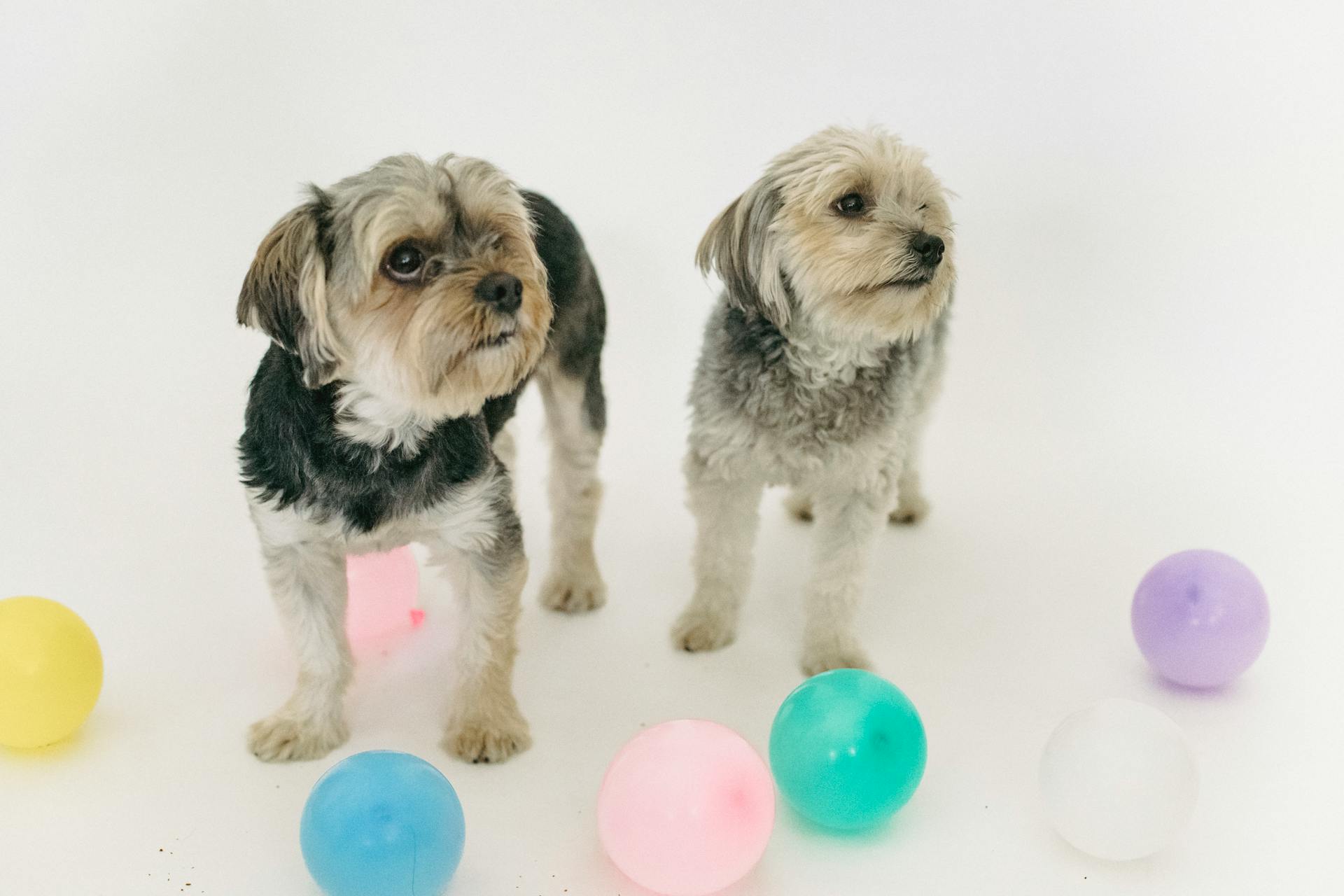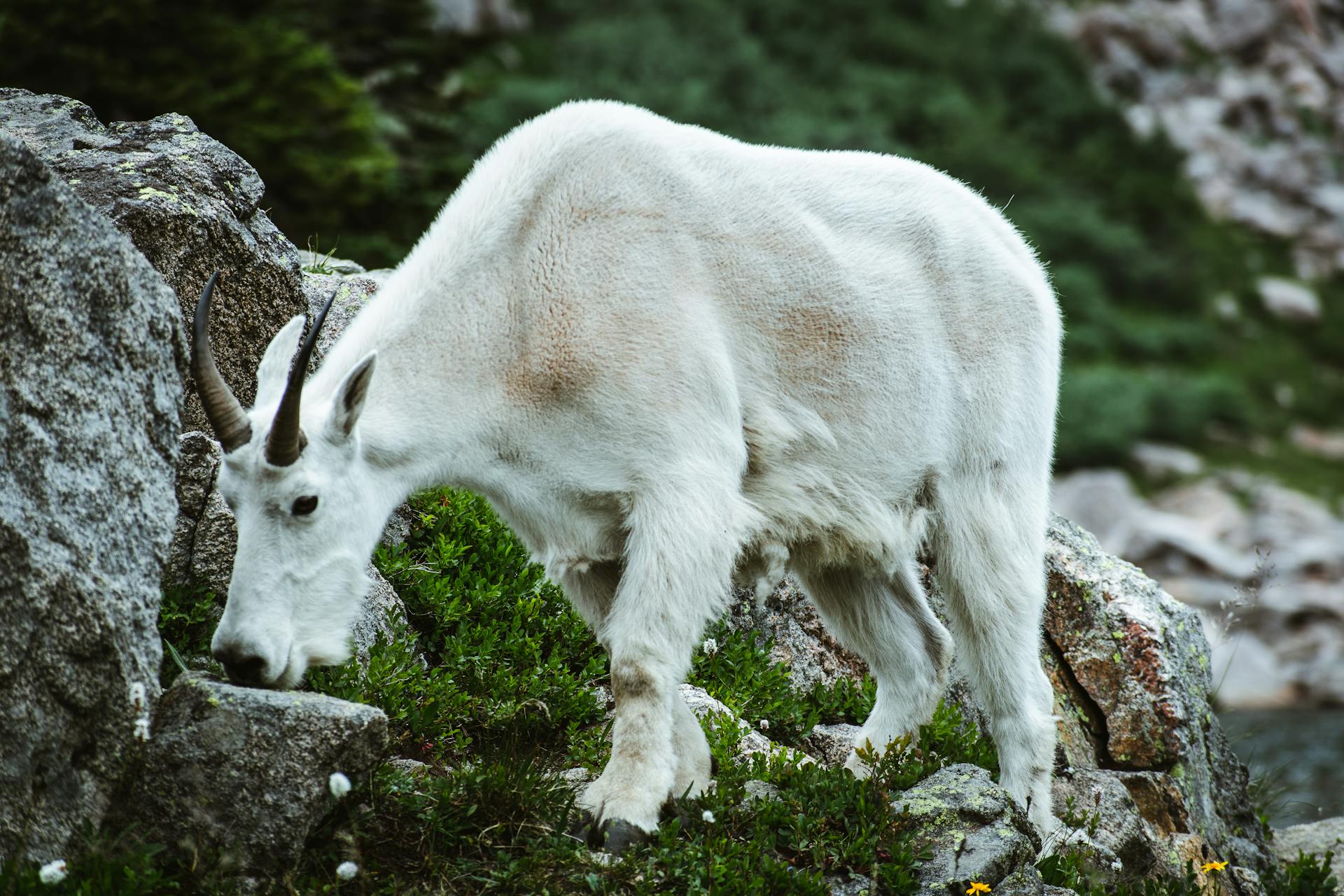
The Norwegian Lundehund is a small Spitz-type dog that originated in Norway, specifically on the Lofoten Islands.
They have a unique appearance with a compact body, short legs, and a distinctive beard.
This breed has a long history, dating back to the 16th century, where they were used for hunting and fishing.
The Lundehund's versatility and intelligence made them an invaluable asset to their owners.
Worth a look: Lundehund Puppies
About the Norwegian Lundehund
The Norwegian Lundehund is a unique breed with a rich history that dates back to the 16th century. They originated in Norway, specifically on the Lofoten Islands, where they were bred to hunt puffins and their eggs.
Their name, Lundehund, literally means "puffin dog" in Norwegian, reflecting their original purpose. For centuries, these dogs played a vital role in the local economy, retrieving puffins from locations inaccessible to humans.
The Lundehund's remarkable flexibility, extra toes, and ability to close their ear canals made them well-suited for navigating the narrow crevices and rocky terrain of their hunting grounds. This unique combination of traits allowed them to thrive in their environment.
By the 20th century, the Norwegian Lundehund was in danger of extinction, with a population of just two dogs in Værøy and its surrounding islands after a canine distemper outbreak. However, dedicated breeders like Eleanor Christie helped preserve the breed.
Today, the Lundehund population has gradually recovered, with an estimated 1,500 dogs worldwide, and approximately 900 of them residing in Norway.
Physical Characteristics
The Norwegian Lundehund is a unique breed with some fascinating physical characteristics. They have a double coat consisting of a harsh outer layer and a softer undercoat, which provides excellent insulation in cold climates.
Their coat comes in a variety of colors, including reddish-brown, white, sable & white, fallow, and tan. Standard markings include black, white, black tips, and red markings.
One of the most distinctive features of the Norwegian Lundehund is their extra toes, which provide better grip and support on uneven surfaces. They typically have a minimum of six toes on each foot, as well as elongated rear footpads.
Here are the typical height and weight ranges for Norwegian Lundehunds:
Their head is moderately broad and slightly rounded, with a keen and lively expression that reflects their intelligent and inquisitive nature.
Height and Weight
Male Norwegian Lundehunds typically stand between 13 and 15 inches tall at the shoulder, while females are slightly smaller, usually ranging from 12 to 14 inches in height.
Females are generally lighter than males, weighing between 12 to 15 pounds.
Males generally weigh around 15 to 18 pounds.
The height difference between males and females is noticeable, with males standing about an inch taller on average.
Both males and females have a relatively compact body size, making them a great fit for apartment living.
Head
The head of a Norwegian Lundehund is a remarkable feature that reflects the breed's alert and intelligent nature. Its skull is moderately broad and slightly rounded, ensuring a well-proportioned head.
Their eyes are medium in size and almond-shaped, giving them a friendly and intelligent gaze. The placement and shape of the eyes contribute significantly to the breed's expressive and engaging facial features.
The eyes are dark brown, set well apart, and convey attentiveness and curiosity. This is a key aspect of the breed's adaptable and keen nature.
You might like: Bull Terrier Head Shape
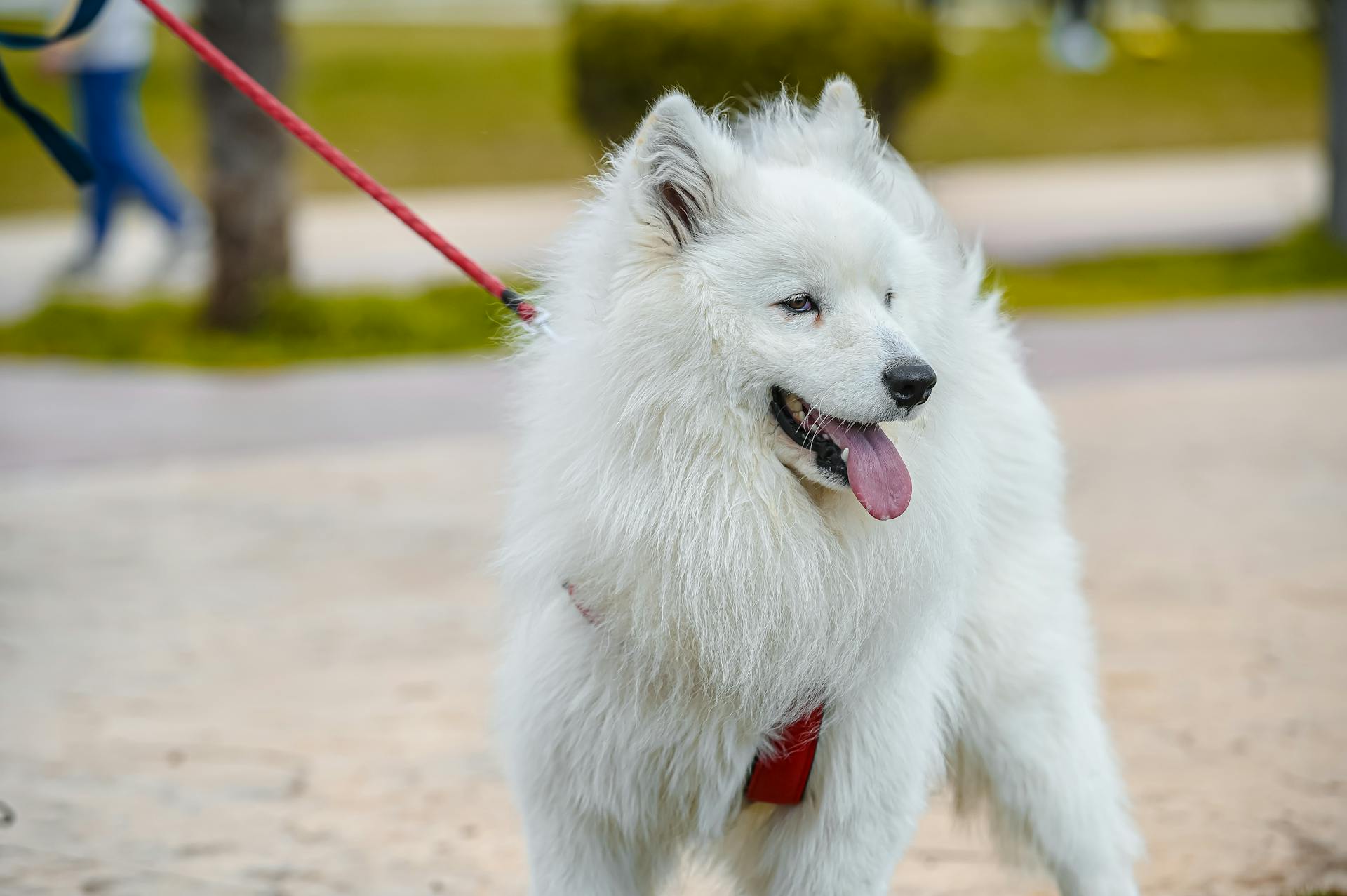
Their ears are small, triangular, and erect, with a high set that enhances their ability to listen and react. This mobility allows the Lundehund to express various emotions, reflecting its responsive and attentive demeanor.
The muzzle is of medium length and well-proportioned to the skull, tapering slightly towards the nose. Strong jaws hint at the breed's working background.
Here are the key features of a Norwegian Lundehund's head:
- Skull: Moderately broad and slightly rounded
- Expression: Keen and lively
- Eyes: Medium in size, almond-shaped, and dark brown
- Ears: Small, triangular, and erect
- Muzzle: Medium length, tapering slightly towards the nose
- Nose: Black and well-developed
- Bite: Scissors bite, with upper teeth overlapping lower teeth
Tail
The Norwegian Lundehund's tail is a distinctive feature of the breed. It's of medium length, set high on the dog's back.
The tail is curved slightly, often forming a ring shape or loosely curled over the back when the dog is alert or in motion. This natural shape is preserved by not docking the tail.
The fur on the tail is similar to the coat on the rest of the body, with a harsh outer coat and softer undercoat that provides insulation and protection against the elements.
On a similar theme: Straight Backed German Shepherds
Coat Characteristics
The Norwegian Lundehund's coat is a remarkable feature, designed to withstand the harsh climate of Norway. Their double coat consists of a harsh, protective outer layer and a softer, dense undercoat, providing excellent insulation.
The outer coat is relatively short and rough, while the undercoat is thick and wooly, aiding in weather resistance and overall durability. This unique combination helps the Lundehund thrive in cold temperatures.
The Norwegian Lundehund's coat comes in a variety of colors, including reddish-brown, white, sable & white, fallow, and tan, as well as different markings such as black, white, black tips, and red.
Here are the standard colors and markings of the Norwegian Lundehund:
The fur on the tail is similar to the coat on the body, with the harsh outer coat and softer undercoat providing insulation and protection against the elements.
Proportion Substance
The Norwegian Lundehund's proportion and substance are truly unique. They have a rectangular profile, with the length of the body slightly exceeding the height at the withers.
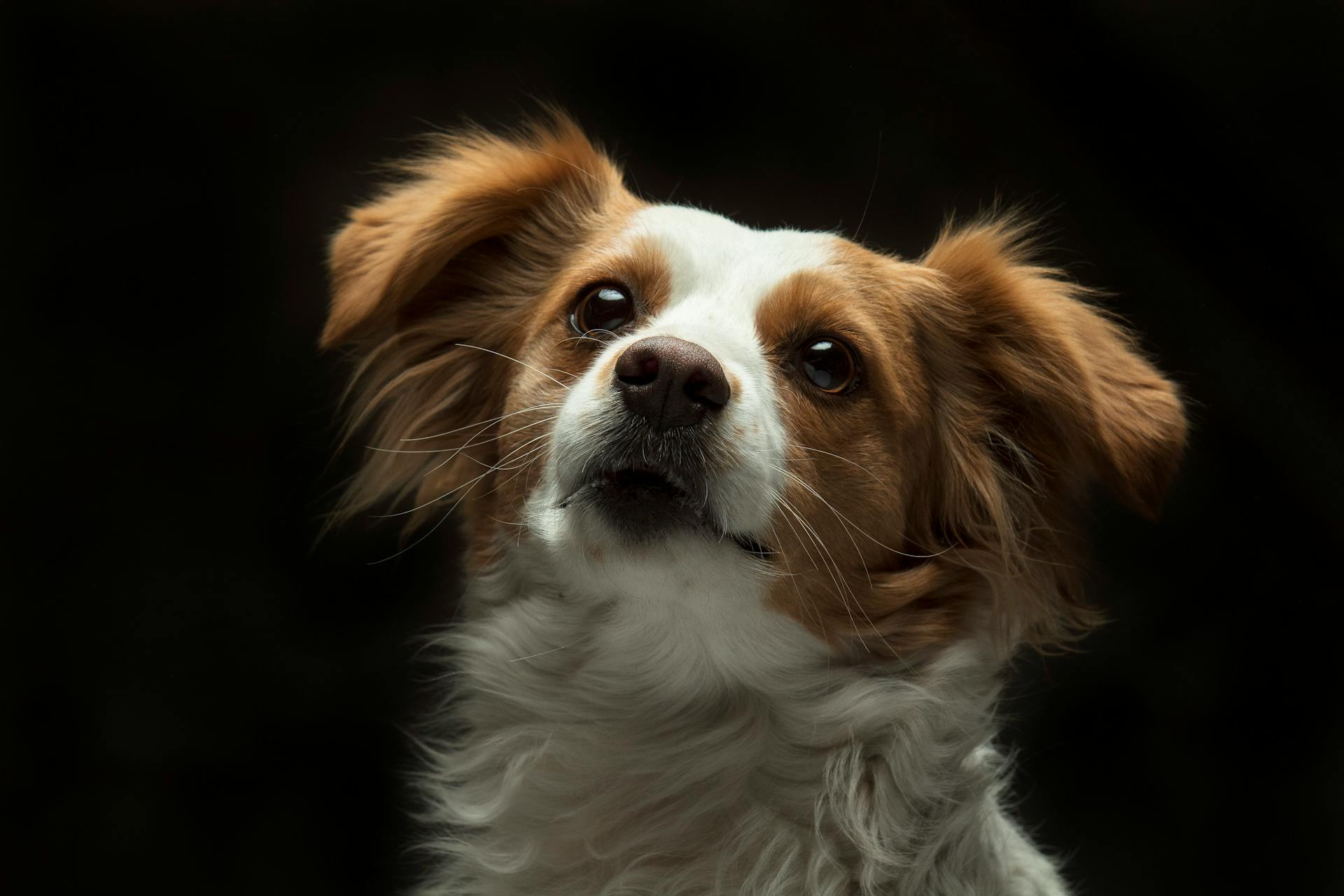
This remarkable flexibility allows them to navigate crevices and cliffs with ease. Their moderate build is a result of needing balance between strength and agility.
The Lundehund is not heavily boned or muscular, which makes sense given their agile and intricate movements. This build enables them to perform remarkable feats in their native Norwegian landscape.
Why Do Dogs Have Extra Toes?
Dogs have extra toes as an evolutionary adaptation to help them navigate challenging terrain. This is evident in the Norwegian Lundehund, which has six toes to provide better grip and support on uneven surfaces.
Having extra toes enhances a dog's agility and balance, crucial for their survival and efficiency as hunters in environments like Norway's coastal areas.
Some dogs, like the Norwegian Lundehund, use their extra toes to climb and descend rocky terrain with ease.
Health and Care
The Norwegian Lundehund is a generally hardy breed, but like all breeds, it has predispositions to certain health conditions. With diligent care, regular veterinary check-ups, and a well-balanced diet, many Lundehunds can enjoy a quality of life that extends well into their senior years.
Their average lifespan ranges between 12 and 15 years. They can be prone to health problems such as hip dysplasia, eye problems, Lundehund syndrome, patellar luxation, and von Willebrand’s disease. Regular screening for these conditions is essential.
To maintain their health, it's crucial to feed them a high-quality diet suited to their age, activity level, and size. Puppies require a diet formulated for small to medium breed puppies, while adults may need more calories to support their energy expenditure. Monitoring their weight and adjusting portions as necessary is also vital to prevent overfeeding and obesity.
Here are some common health problems to be aware of:
- Hip dysplasia
- Eye problems
- Lundehund syndrome
- Patellar luxation
- Von Willebrand’s disease
Regular grooming is also essential, including weekly brushing, occasional bathing, routine ear cleaning, and periodic nail trimming. This helps maintain their coat's weather-resistant properties and prevents skin issues.
Health
The Norwegian Lundehund is a generally healthy breed, but like all breeds, it has its share of health concerns. The average lifespan of a Norwegian Lundehund ranges between 12 and 15 years with proper care.
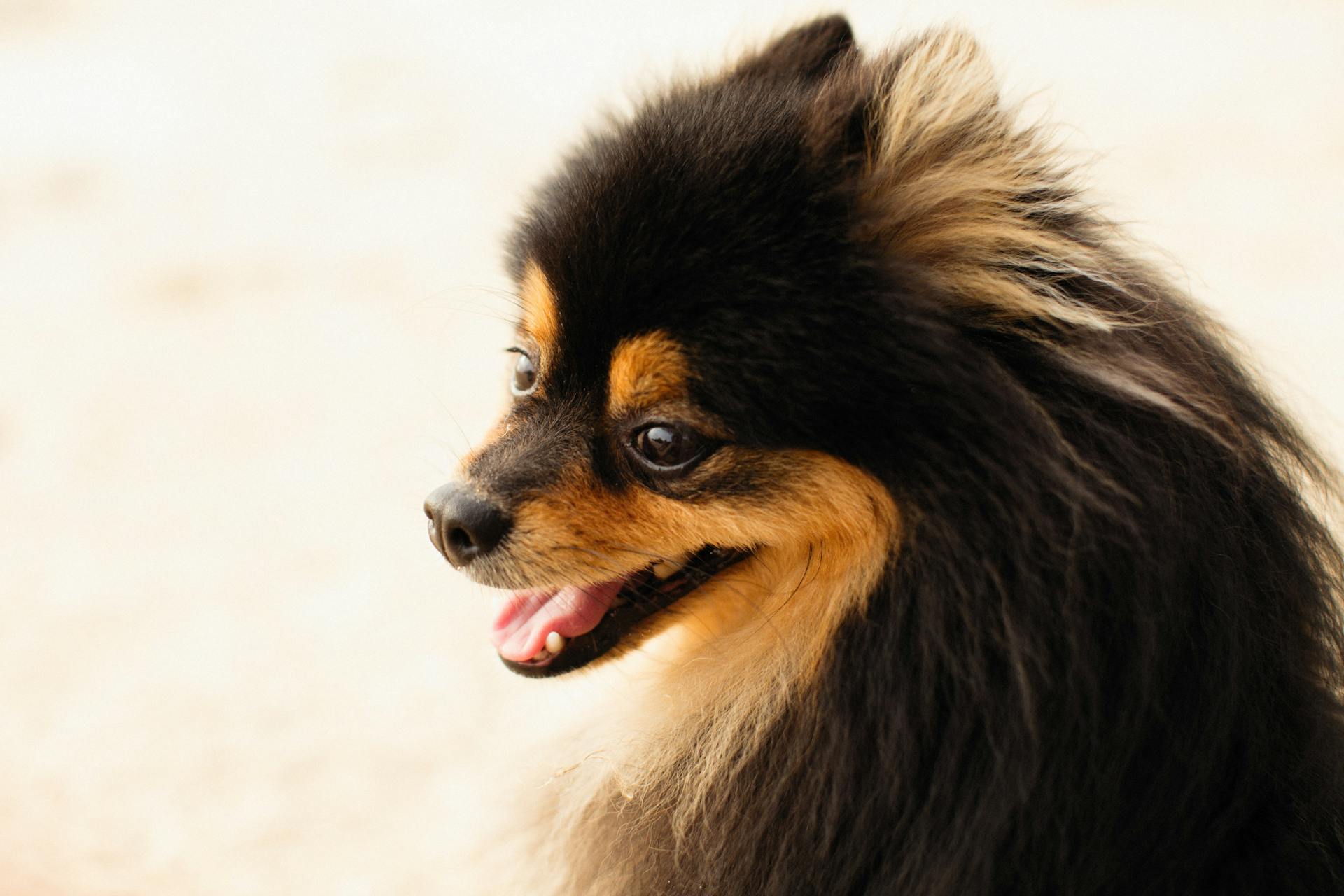
Regular veterinary check-ups and a well-balanced diet can significantly enhance the well-being and longevity of a Norwegian Lundehund. Monitoring for early signs of potential health risks is crucial in managing their health effectively.
Some common health issues in Norwegian Lundehunds include Lundehund Syndrome, a unique set of gastrointestinal disorders, patellar luxation, a common orthopedic condition, and eye conditions, such as cataracts and glaucoma. These conditions can affect nutrient absorption and digestion, mobility, and eye health.
To minimize the risk of these health issues, it's essential to provide regular exercise, such as daily walks and play sessions in a securely fenced area. This can help channel their energy positively and provide essential mental stimulation.
Here are some potential health risks to be aware of:
- Lundehund Syndrome: A unique set of gastrointestinal disorders specific to the breed, affecting nutrient absorption and digestion.
- Patellar Luxation: A common orthopedic condition where the kneecap dislocates from its normal position, affecting mobility and comfort.
- Eye Conditions: Owners should be aware of potential hereditary eye issues and seek regular ophthalmic evaluations to maintain their Lundehund's eye health.
In addition to regular exercise, feeding a high-quality dog food that aligns with your Lundehund's age, size, and activity level is crucial for their health and well-being. This can help prevent obesity and ensure they receive the necessary nutrients for optimal health.
The amount of food your Norwegian Lundehund requires can vary based on their age, size, and activity level. Typically, an adult Lundehund might require 1 to 1.5 cups of high-quality dry food per day, divided into two meals.
Recommended read: Shiba Inu .01
Grooming
Grooming is an essential part of Norwegian Lundehund care, and it's not as complicated as you might think. Regular brushing is crucial to remove loose fur, prevent matting, and distribute natural skin oils throughout the coat.
The Lundehund's double coat, consisting of a harsh outer coat and a soft, dense undercoat, requires regular maintenance to keep it in good condition. This means weekly brushing, which helps keep their coat clean and reduces shedding.
During shedding seasons, typically spring and fall, the Lundehund may require more frequent grooming sessions to manage the increased shedding. This is because they lose their undercoat during these times, leading to more loose hair.
To keep their coat in top condition, it's essential to use a dog-specific shampoo that preserves the natural oils of their coat. This protects the integrity and function of their coat, which is vital for their overall health.
Beyond coat care, regular grooming also includes nail trimming, ear cleaning, and dental care. Keeping the Lundehund's nails trimmed prevents discomfort and mobility issues, while clean ears help prevent infections.
Discover more: Yorkshire Terrier Care
Here's a quick rundown of the essential grooming tasks for your Norwegian Lundehund:
- Weekly brushing to remove loose fur and prevent matting
- Occasional bathing with a dog-specific shampoo
- Routine ear cleaning to prevent infections
- Periodic nail trimming to prevent discomfort and mobility issues
- Regular tooth brushing to maintain good dental hygiene
Regular grooming not only keeps your Lundehund's coat looking its best, but it also helps prevent health issues that can arise from neglecting their grooming needs. By incorporating these simple tasks into your routine, you'll be well on your way to becoming a pro at grooming your Norwegian Lundehund.
Puppy Care
Establishing a routine is vital for a Norwegian Lundehund puppy's comfort and security. Consistent feeding, potty breaks, and sleep schedules help them adapt to their new environment and understand what is expected of them.
Early socialization is key to developing a confident and well-behaved Lundehund. Introducing your puppy to various people, environments, and other animals under controlled and positive circumstances can significantly influence their temperament and behavior as adults.
Proper nutrition is fundamental during this growth stage. Feeding your Lundehund puppy a high-quality diet formulated for small to medium breed puppies will support their development and health.
Training should begin early, utilizing positive reinforcement methods to encourage good behavior and establish a bond based on trust and mutual respect. Lundehund puppies are intelligent and capable learners.
It's essential to have consistent veterinary examinations to confirm the puppy's vaccinations are current and to observe their growth and progress. These appointments also provide a chance to talk about spaying or neutering and to develop a plan for preventive healthcare.
The Lundehund is an independent thinker and can exhibit stubbornness. Positive reinforcement techniques such as play, praise, and food rewards are effective in training.
Frequently Asked Questions
Why are Norwegian Lundehunds so rare?
Norwegian Lundehunds became rare due to a combination of factors, including overhunting by small island farmers and fishermen, and government-imposed taxes that made it difficult for residents to keep them. This led to a significant decline in their population and nearly made them extinct.
How much does a Norwegian Lundehund cost?
A Norwegian Lundehund typically costs around $2000, making it a relatively expensive purebred breed.
Are Norwegian Lundehund friendly?
Yes, Norwegian Lundehunds are known for their friendly and happy nature, making them a great companion for families and individuals alike. They get along well with children and strangers, making them a wonderful addition to many households.
Why do Norwegian Lundehunds have 6 toes?
Norwegian Lundehunds have six toes due to their unique adaptation for navigating steep and slippery terrain. Their extra toes provide extra traction and grip, helping them climb and balance with ease.
Sources
- https://showsightmagazine.com/dog-breeds/norwegian-lundehund/
- https://dogtime.com/dog-breeds/norwegian-lundehund
- https://www.wisdompanel.com/en-us/dog-breeds/norwegian-lundehund
- https://www.thesprucepets.com/norwegian-lundehund-dog-breed-profile-4780313
- https://www.dogster.com/dog-breeds/norwegian-lundehund
Featured Images: pexels.com
